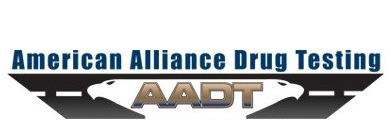Motor Carrier Alliance Wants Hair Testing OK’d for DOT Driver Drug Screening
Prompted by a few large trucking interests, Sen. Mark Pryor, D-Ark., and Rep. Rick Crawford, R-Ark., have introduced federal legislation designed to enable trucking companies to more effectively prevent lifestyle drug users from gaining employment as commercial truck drivers.
Companion bills in the Senate and House direct the Department of Health and Human Services (DHHS) to recognize hair testing as an optional method to comply with the Department of Transportation drug testing requirements for truck drivers.
Under current federal regulations, only urinalysis is recognized by DHHS for mandatory pre-employment drug and alcohol exams of truck driver applicants. However, the number of truck driver applicants who pass a pre-employment urine test but fail a subsequent hair test is “alarmingly high,” according to the Washington, D.C. based Alliance for Driver Safety & Security, also known as The Trucking Alliance.
Sponsor Rep. Rick Crawford and co-sponsors Rep. Tom Cotton, Rep. Tim Griffin and Rep. Steve Womack are all Republicans who represent Arkansas. Three members of The Trucking Alliance are based in Arkansas – J.B. Hunt, Fikes Truck Line and Maverick Transportation. The fourth co-sponsor, Rep. Reid Ribble, is a Republican from Wisconsin, home state to The Trucking Alliance member Schneider National. Other member companies of The Trucking Alliance are Knight Transportation, Dupre Logistics and Boyle Transportation.
Due to urine testing inconsistencies, many trucking companies have turned to hair testing, which is more expensive, but is more effective in identifying drug users who apply for jobs as truck drivers. Hair follicle drug testing at a lab now runs about $60, while urine drug tests are as low as $12.
“Passing this much needed legislation will give trucking companies the option of conducting either a urinalysis or a hair test or both methods and will also allow positive hair tests to be reported to the soon to be created national drug and alcohol clearinghouse that Congress adopted last year,” says Gary Salisbury, a member of the Trucking Alliance board of directors and the current chairman of the Arkansas Trucking Association.
Congress mandated the creation of a drug and alcohol clearinghouse last year and the Department of Transportation is expected to have the clearinghouse operational by next year. FMCSA sent the rule to the OMB on March 26 and is still awaiting an opinion. This database will identify any person who has previously tested positive on a pre-employment drug exam required by the federal government before being employed as a truck driver.
However, unless DHHS recognizes hair testing as an approved methodology, no positive hair test results can be submitted to the national clearinghouse database. The new legislation introduced today will enable those drug test results to be reported to the clearinghouse.
“With millions of private-sector jobs and businesses relying on the trucking industry, I’m working every day to find new ideas to strengthen this economic powerhouse,” says Pryor, who also sponsored the clearinghouse legislation that became part of the current highway bill, MAP-21. “By allowing companies to eliminate duplicative processes, this bill will ensure our businesses have the certainty they need to invest, expand, and create jobs while securing the safety of our highways for all motorists.”
Pryor and Crawford were joined by were joined by Sen. John Boozman, R-Ark, and representatives Tom Cotton, R-Ark., Steve Womack, R-Ark., Tim Griffin, R-Ark. and Reid Ribble, R- Wis.
Nothing is Foolproof
Industry critics of hair testing have numerous concerns with it in addition to its lack of any sort of validation by the Department of Health and Human Services (DHHS), who incidentally has not given approval of its use. The DHHS Drug Testing Advisory Board is in the process of evaluating hair-based testing methods.
The Trucking Alliance contends that the DHHS should be allowed to complete the review of the testing method and, if it is determined to be a viable testing mechanism, to establish protocols and standards.
Many of the issues that the DHHS will likely grapple with are the limitations of the testing pointed out by many within the industry.
Normal human head hair grows at an average rate of one-half inch per month. The industry “standard” tests approximately one and one-half inches of hair, or three months of growth. A positive test result will occur only if there has been drug use at least three times during the period of time – generally three months – being tested based on hair growth.
Estimates vary, but after a drug is used, it takes approximately four to 10 days for the hair containing the drug to grow out of the scalp enough to be cut, eliminating any recent drug use from detection.
The variances in hair types have also posed problems in standardizing drug testing. Hair shape, size, formation, etc., varies by race, sex, age, position on the scalp, hair color and texture. According to the American Civil Liberties Union, dark hair is more likely to test positive for a drug and additionally African-Americans are more likely to test positive than Caucasians. Differing portions of the scalp hair can even be dormant at any given time and would not reflect drug use.
Hair testing can produce false positives, just like urine testing, for a number of reasons. The tests themselves alert to very low concentrations. That leads to slew of potential false positives. These can include over-the-counter medicines mimicking illegal drugs, passive exposure and contaminated samples.
Currently, hair samples are washed by test labs before being subjected to the tests. In the absence of any standards, different labs employ different washing procedures designed to remove trace elements from the exterior of the hair. The duration of wash and cleansers used can also affect the test results. Too little cleanser for a short period of time could result in an uptick in false positives while too much cleanser for too long could increase the number of false negatives.



